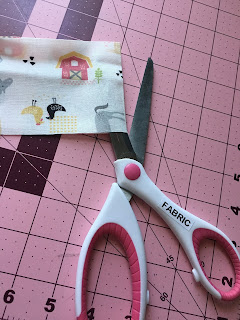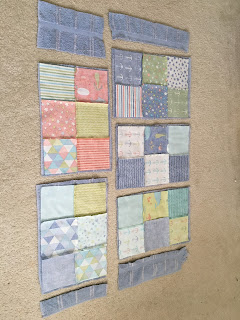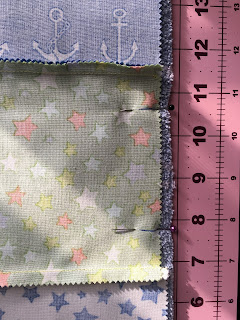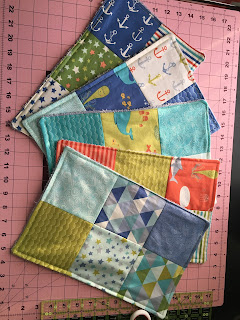On another project I am working on, I needed eight 9x9 squares of batting. (The soft stuff int he middle of projects, that no one sees.) I fell short of 2 squares while cutting out my batting. Luckily! The chunk of batting I was cutting from gave me some large scraps! Here's how to sew them together!
First you will need some scrap pieces.
Next you will need to make sure that at least ONE side on each piece is perfectly straight!
(This is IMPORTANT!)
(This is IMPORTANT!)
Next, go to your sewing machine, and find your zig-zag stitch.
On my machine, it's the number 4 stitch.
On my machine, it's the number 4 stitch.
Next, I set my machine to make the zig-zag WIDER.
My machine goes up to 7 on this setting, but 6 is enough.
The top number (1.4), is how LONG the stitch will be. That's not super important in this case.
My machine goes up to 7 on this setting, but 6 is enough.
The top number (1.4), is how LONG the stitch will be. That's not super important in this case.
Next, place your two pieces together under the machine, lining up the middle with the center of the presser foot (The part that holds down your fabric as you sew)
Next, just sew down! Be sure to keep the two pieces close together, and that each stitch goes over both pieces, to bind them together.
You should have one flat piece of batting now!
Just trim it up to the size you need!
"What if my scrap pieces are completely different sizes?"
Great question! For my next square, I had to get a scrap piece of batting from my "stash"
First, do a quick measure to make sure you will be able to get what you need out of it.
I cut it close on this one, haha!
Great question! For my next square, I had to get a scrap piece of batting from my "stash"
First, do a quick measure to make sure you will be able to get what you need out of it.
I cut it close on this one, haha!
First, I trimmed it so that it would be the same length as the larger piece.
Next, I trimmed a bit off the smaller piece to make sure it was perfectly straight.
If one or both of them are wavy, not straight, you wont be able to put them flat against each other under the sewing machine.
If one or both of them are wavy, not straight, you wont be able to put them flat against each other under the sewing machine.
And that's it!! I will show you what I did with my squares next Friday!
Was this tip helpful to you?
Was this tip helpful to you?
Visit my Facebook page for more blogs!
I post food blogs every Monday and craft blogs every Friday!
I post food blogs every Monday and craft blogs every Friday!










































